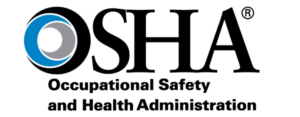 The U.S. Occupational Safety and Health Administration (OSHA) announced on May 11 its final rule had been issued which will require affected employers to electronically submit detailed annual reports of workplace injuries and illnesses for publication online.
The U.S. Occupational Safety and Health Administration (OSHA) announced on May 11 its final rule had been issued which will require affected employers to electronically submit detailed annual reports of workplace injuries and illnesses for publication online.
The rule takes effect on August 10 of this year with initial reports due to be filed electronically in 2017.
The new rule includes the following provisions:
- Electronic Recordkeeping Requirements – Certain employers (establishments with 250 or more employees in industries covered by OSHA recordkeeping regulations, as well as establishments with 20-249 employees in certain high-risk industries) will be required to electronically submit injury and illness data that they are already required to record on their onsite OSHA Injury and Illness forms. The data required to be submitted electronically will come from OSHA Forms 300, 300A, and 301. Some of this data will be posted to the OSHA website, with OSHA indicating all data will be scrubbed for PII (Personally Identifiable Information).
- Anti-retaliation Protections – The rule prohibits employers from discouraging workers from reporting an injury or illness. These provisions of the new rule, which become effective August 10, 2016, will:
- Require employers to inform employees of their right to report work-related injuries and illnesses free from retaliation.
- Clarify the existing implicit requirement that an employer’s procedure for reporting work-related injuries and illnesses must be reasonable and not deter or discourage employees from reporting.
- Incorporate the existing statutory prohibition on retaliating against employees for reporting work-related injuries or illnesses.
The compliance schedule for the new electronic reporting requirements will involve a two year phased-in process:
- Establishments with 250 or more employees in industries covered by the recordkeeping regulation must submit information from their 2016 Form 300A by July 1, 2017. They will be required to submit information from all 2017 forms (300A, 300, and 301) by July 1, 2018. Starting in 2019 and annually thereafter, the information must be submitted by March 2.
- Establishments with 20-249 employees in certain high-risk industries must submit information from their 2016 Form 300A by July 1, 2017, and their 2017 Form 300A by July 1, 2018. Starting in 2019 and annually thereafter, the information must be submitted by March 2.
OSHA has indicated that these changes will improve safety for workers across the country by “nudging” employers to focus on safety given that injury information will now be publicly available. They also feel the regulation will improve the accuracy of their data by ensuring that workers will not fear retaliation for reporting injuries or illnesses.
Considerations for Employers
With the August 10 effective date of the anti-retaliation provisions right around the corner, affected employers will want to focus on several key items at this time:
- Employee notification. According to the OSHA website, one way for employers to meet the requirement to inform employees of their right to report work-related injuries and illnesses free from retaliation is by posting the OSHA “It’s The Law” worker rights poster from April 2015 or later (http://www.osha.gov/Publications/poster.html).
- Procedures for reporting injuries and illnesses. Employers will want to ensure that current procedures in place are reasonable, and also that the individuals completing the required reports are well-trained.
- Drug-testing policies. In light of new anti-retaliation protections, there is concern that employers who might require drug-testing of each employee after an accident could be seen as exerting pressure not to report an accident. Employers should ensure that drug-testing policies and practices are clear and consistent around testing for cause.
- Safety incentive programs. Once again, there is concern that safety incentive programs instituted by employers, such as rewards for a certain period of time without a reportable accident, etc., may be viewed as a way of discouraging employees from reporting accidents. Employers should review any such programs in light of the new provisions.
OSHA has made available on their site a Frequently Asked Questions page to assist employers in understanding and implementing the new rule.
Looking for More Guidance?
For assistance with the new rule or understanding your company’s OSHA requirements, contact KMA Human Resources Consulting.
